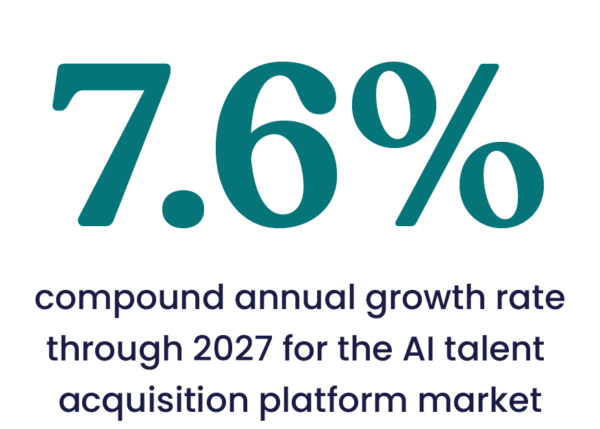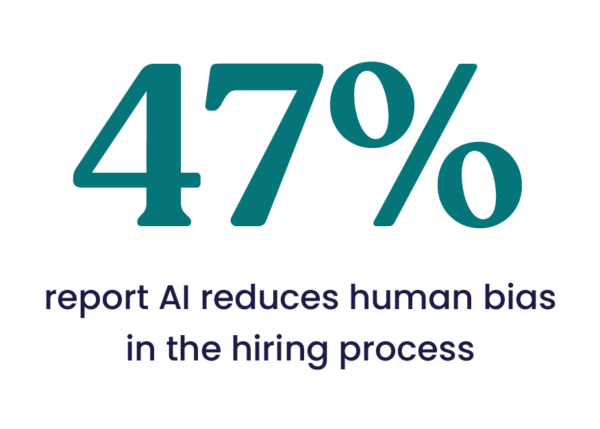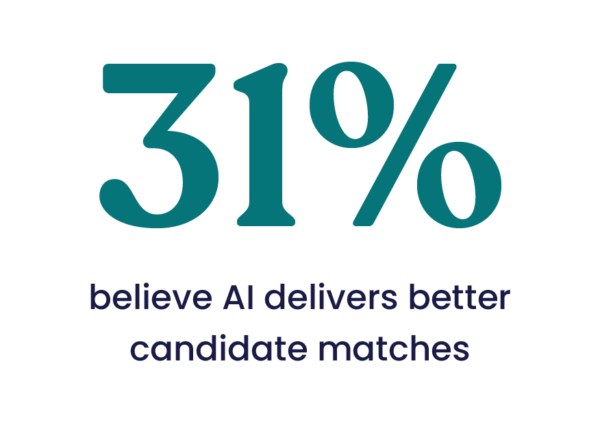TA leaders of Cielo, Raytheon discuss affirmative action next steps >> Catch the webinar today!
5 talent acquisition tactics to find a great fit
There was a time when the hiring process looked like this at most organizations: A company looking to fill an open position would place a classified ad in the newspaper. Then it’d wait for job seekers to respond, either by dropping off or mailing in resumes. A recruiter would then manually sort through the stack of resumes received, set up interviews with a few applicants, hire their favorite candidate, and repeat the process all over again for the next open role.
It often felt like a high-stakes game of eeny, meeny, miny, mo. After all, recruiters had finite talent pools to work with and knew little about the people behind the resumes sitting on their desks. And job seekers knew nothing more than what the company told them about the job—and even less about the company itself.
The whole process was inefficient, reactive, and limited in its ability to help organizations attract and hire the best talent out there.
Today, life moves faster. The internet has changed the ways and speed at which we communicate. The rise of social media, word of mouth, and rapid communication technology means job candidates now have access to a wealth of information about your company before they even consider applying to a role. To keep up with these changing dynamics, the talent recruitment function has also evolved.
While hiring was once considered a purely administrative task handled by human resources, the mindset has shifted. With the growing war for talent, hiring is no longer seen as a short-term necessity—but a long-term strategy. Companies now have dedicated talent acquisition teams that are seen as essential players in executing business strategy and promoting culture. Simple recruiting has matured into strategic talent acquisition.
In this article, we’ll explore what is talent acquisition, the key differences between talent acquisition and talent recruitment, and four ways your talent acquisition team can improve its processes and make better hires.
What is talent acquisition and why is it important?
Talent acquisition refers to the process of identifying, attracting, and acquiring talent to meet organizational needs. It covers every step of the hiring process, from crafting a job description and sourcing to recruiting, interviewing, screening, hiring, and onboarding.
And talent acquisition goes far beyond simply filling open job requisitions and processing candidates. A talent acquisition team is responsible for not only evaluating a potential candidate’s job-related skills, but also identifying their talents, interests, culture fit, and potential with the company. Strategic talent acquisition focuses on anticipating future hiring needs, building relationships, and nurturing talent pipelines with a long-term vision in mind.
Building an effective talent acquisition strategy is a long game—but the payoffs are substantial. It enables organizations to create talent pipelines that reflect anticipated hiring plans and future talent needs. It also allows companies to develop better relationships with potential candidates, build a competitive advantage, and be seen as the employer of choice in a competitive job market. By taking a strategic talent acquisition approach, talent acquisition professionals can also improve the quality of hires and reduce turnover.
Talent acquisition vs. recruitment
When asking what is talent acquisition and what is recruitment, the difference is more than semantics. While the terms “talent acquisition” and “talent recruitment” are often used interchangeably, there are important distinctions between the two.
Talent recruitment is an action to solve an immediate problem—fill existing and currently available job openings. Recruitment is concerned with filling open positions as quickly as possible. Talent acquisition, on the other hand, is a continuous, strategic process. It is a more strategic approach to hiring that is centered around the long-term goal of attracting talent with specific skill sets that can grow with the company.
While recruiting is a subset of the talent acquisition process, talent acquisition involves much more than just sourcing job candidates. It also includes a host of other strategic elements, from workforce segmentation and candidate relationship management (CRM) to employer branding and recruitment marketing.
While recruitment remains an important activity to fill immediate vacancies, the goal of talent acquisition is to make your company the most attractive employer for top candidates. After all, attracting the best talent to your company isn’t a one-and-done event—it is a continuous process of building relationships, nurturing passive candidates, and creating a great candidate experience.
Is recruitment or talent acquisition better for your company?
So, now that you know the difference between talent acquisition and talent recruitment, you’re likely wondering: Which one is better? And the answer is this: It depends.
In the question of talent acquisition vs. recruitment, determining which one is right for your company depends on a few different factors. If you need to rapidly fill a position to meet business needs, you need recruitment. But if you’re looking to hire somebody for a role that may take several months (or longer) to fill, you probably need talent acquisition. Often, leadership roles or roles facing skills shortages are those that most need a talent acquisition strategy.
Both talent acquisition and talent recruitment are essential for hiring success, and you need a strong recruitment process just as much as you need an effective talent acquisition strategy. A talent acquisition approach is probably not what’s needed to hire part-time retail employees or backfill a sales position at the peak of your sales season, for example. Similarly, simple recruiting isn’t going to be enough to build the leadership talent pipeline you need to remain competitive into the future.
And remember that this isn’t a one or the other type of thing: You can always shift your hiring strategy from recruitment to talent acquisition—and vice versa—depending on changing circumstances and business needs.
Tips for improving talent acquisition
Here are four best practices that will help you improve your talent acquisition processes and succeed in the war for talent:
1. Forecast
Any effective talent acquisition strategy starts with forecasting your organization’s short- and long-term hiring needs and talent requirements. Since a talent acquisition team needs to be more predictive than reactive, identify which roles at your company are hardest to hire for—such as senior leadership roles, technical jobs, or positions facing skill shortages—and prioritize them in your talent acquisition efforts.
2. Build a pipeline
It can be challenging to carve out time for talent acquisition activities when you have the third fire drill of the day rolling into your inbox, but it’s critical to prioritize your talent pipeline. This means scheduling time each day for networking, engaging candidates, and building relationships with people who possess the skills your organization needs—even if you don’t have an open role for them today. And whether you use a simple spreadsheet or talent acquisition software, keep track of your active and passive candidates so that when the time comes to hire, you already have a network of potential applicants to tap into.
3. Get buy-in
Talent acquisition shouldn’t be just an “HR thing.” Since hiring impacts every aspect of your company, talent acquisition should be a shared responsibility across the organization. Get other departments involved. Consider employee incentives and referral programs to build your talent pipeline. Encourage employees to share posts about your company on social media. Share your long-term talent vision so that employees understand what types of candidates you’re looking for. When you eliminate silos and get employees involved in talent acquisition, not only will you get more qualified candidates, but employees will also feel a greater sense of commitment to the company.
4. Put in the time
Interviewing is the golden opportunity to connect with candidates on a deeper level than you’re able to from their resumes. But even though it’s one of the most critical components of the talent acquisition process, there is often a great deal of variation in interviewing experience, styles, and skills across hiring teams. This makes it difficult for HR and talent acquisition teams to get the most out of each interview—especially now that interviewing is virtual. To overcome this, take the time to implement tools that will help you extract the candidate insights you need from the interview process. Intelligent video interviewing technology, for example, helps hiring teams conduct fair, consistent interviews to get the insights needed to hire the best-fit candidates.
Accelerate your talent acquisition strategy with AI
Talent acquisition is a long-term strategy. And while that’s precisely what makes it so effective in helping companies attract the best talent—it’s also what can make it frustrating for talent acquisition professionals who are often evaluated based on their ability to deliver quick results.
To hire smarter and faster, talent acquisition teams are increasingly turning to artificial intelligence (AI). Research reveals that the market for AI talent acquisition platforms is expected to grow at a compound annual growth rate of 7.6 percent through 2027. And when you consider the benefits of leveraging AI and machine learning in the talent acquisition function, it’s easy to understand why. LinkedIn found that 67 percent of recruiters and hiring managers say AI saves them time, 47 percent report it reduces human bias in the hiring process, and 31 percent believe it delivers better candidate matches.




Using an intelligent video interview solution like Clovers, for example, organizations can keep biases and guesswork out of hiring decisions, build more diverse teams, and improve the candidate experience. It also enables companies to accelerate the talent acquisition process and more successfully compete for top talent in a candidate-driven market.
With AI-powered talent acquisition tools and technology, hiring teams can focus their time and efforts on the work only humans can do—like building and nurturing relationships with candidates. As a result, organizations can strengthen talent pipelines and put the right people in the right roles—now and into the future.
Ready to upgrade your talent acquisition processes?
Schedule a demo or try for free for 30 days to learn how Clovers’ AI-powered video interview solution creates a fair, consistent interview process so that you can identify, engage, and hire the best-fit candidates for your organization.
Jackie brings over a decade of HR technology experience to Clovers. She’s passionate about helping companies build talented and diverse (dream) teams and delivering an incredible hiring experience to everyone involved.

